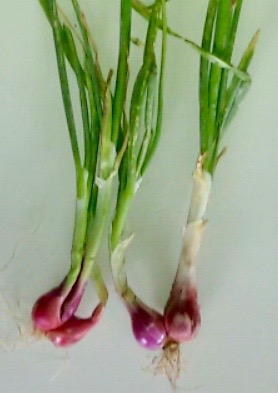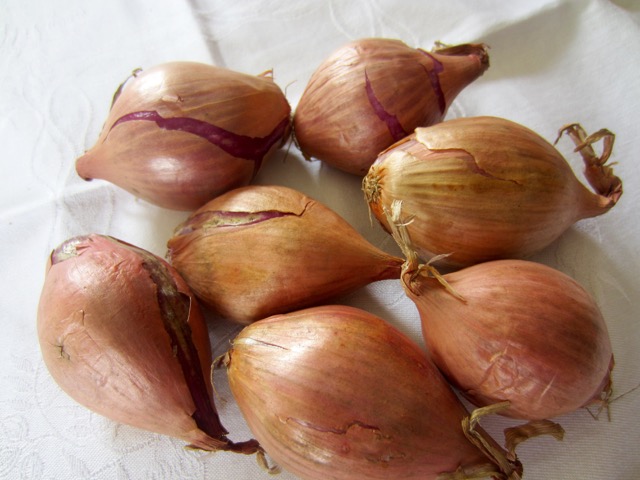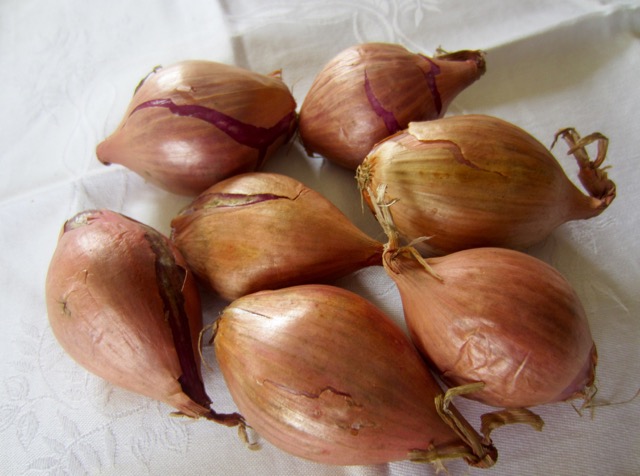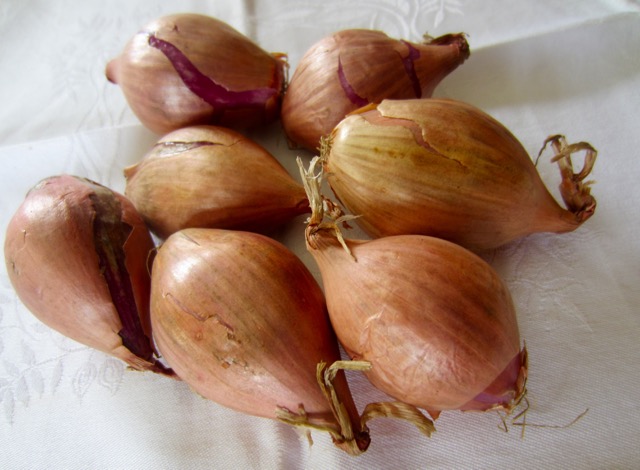Allium cepa var aggregatum

Shallots are cultivated from offsets, and not seeds, like the common onion.They are smaller, sweeter and mild tasting.
The bulb is composed of multiple cloves but the cloves are not enclosed in a sheath and are easy to separate.
The skin colour varies from golden brown to grey to rose red.
The flesh is off-white and often tinged green or magenta.
Types of Shallots
The Brown shallots, also known as English or Dutch, shallots are the most commonly available.
The Banana shallot or echalion is a cross between a regular shallot and an onion. It is larger, oval and longer than the other types. It has a smooth, tan-coloured skin that’s easy easier to peel and a slightly milder taste than the others.
Pink shallots have a pink skin and a crisp texture and their flavour is pungent, but not harsh.
Culinary Use of Shallots
Shallots are used in cooking to impart a delicate savoury flavour. They can also be used raw in salads or in salad dressings. Please do not substitute shallots with normal onions because normal onions have a stronger taste and will not give you the required result.
Shallots can also be pickled.
How to Buy Shallots
Select shallots that are firm, dry, without damp or mouldy patches and are free of sprouts.
How to Store Shallots
Fresh shallots can be stored in a cool dry area for up to 6 months or longer at 0-4.5°C (32-40°F) at 60-70% relative humidity.
They can also be stored at room temperature in a cool, dark, dry place with good air circulation for several weeks.
myfavouritepastime.com Last Updated: 27 October 2018



